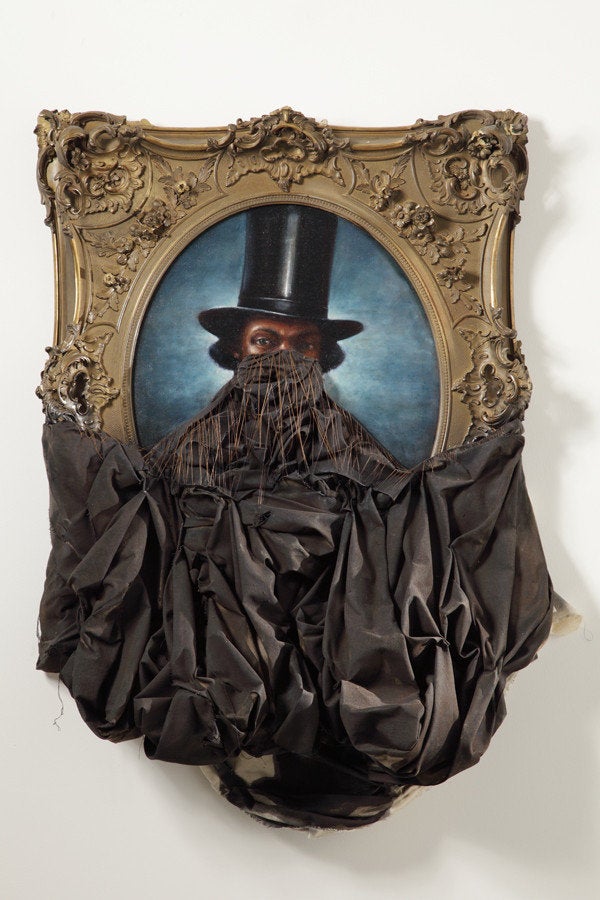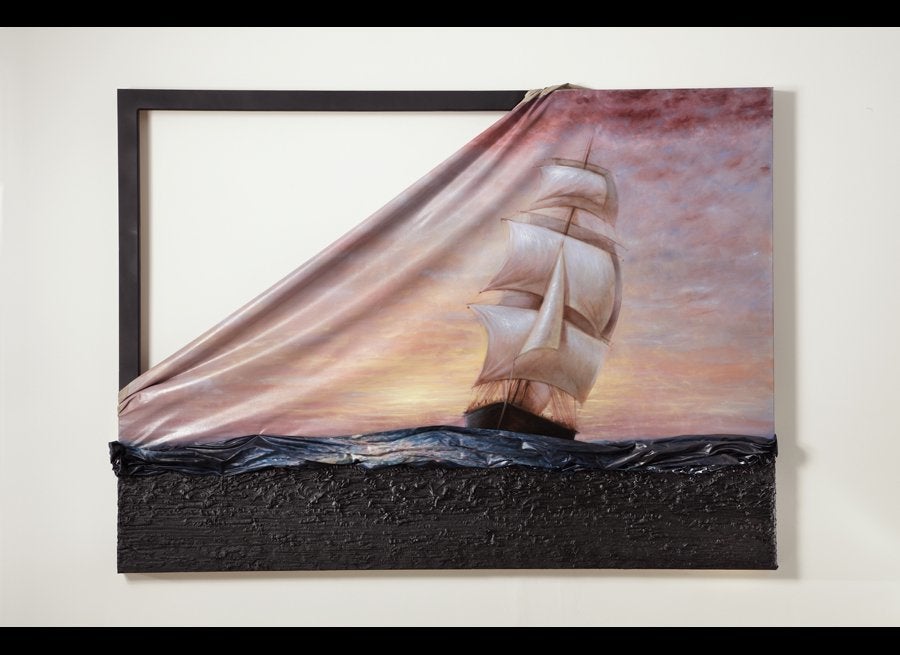
Titus Kaphar's paintings reveal the materiality and instability of history and the artistic canon, showing that the past is never safe from the present.
Kaphar, who was born in Kalamazoo, Michigan, begins his process meticulously painting copies or riffs on the classical canon à la John Singleton Copley, Thomas Eakins and Eugène Delacroix. These paintings then become the sites for intervention, letting the historical characters fulfill unwritten destinies like a haunted house coming to life. Kaphar cuts and shreds, he erases and whites out, he rumples, sews and paints in tar. His sculptural works used "finished" paintings as the point of departure, showing how no history is ever quite fixed. Even Kaphar's materials have a history. Painting with tar, he references its past covering wounds and torturing people, saving people and killing them. The tar, like the works, examines the tenuous relationship between destruction and restoration.

Many of his manipulations evoke the historical absence of African Americans and women from classical (art) historical trajectories. Kaphar whitewashes a man's face in one painting, a sensual and submissive reclining nude goes elsewhere in another. Yet many works focus on the personal over the political: the dead are laid to rest, a child moves to sit beside her mother. And others still seem to sidestep historical narrative completely in an exploration of paintings' material histories. Some of the most stunning works free the canvas from its stretch bars and bunch up the painting's skin into a rumpled drapery. Frames, canvas bars and gallery walls emerge like innards and organs of the normally pristine works.
In an interview for his "History in the Making" exhibition, Kaphar says he is trying to "take [his] love for all of art history and collapse them together. Taking classical painting and modernist gesture, squishing it together to make a contemporary thing."
Kaphar's works create an alliance between history and art in their curation of cohesion from chaos. Both create fixed shapes out of shadows, shapes which Kaphar dismantles, cuts up and puts back together again. The collection, called "Classical Disruption," reminds us of Valerie Hegarty's "Altered States" in their mutual undoing of history at the seams. Yet while Hegarty asks us to find beauty in destruction and decay, Kaphar offers a new beginning at the end of his surgical procedures. There is rebirth in the residue.
We can't get enough of Kaphar's historical ghost stories and incredible finesse. See a slideshow of his work below:

